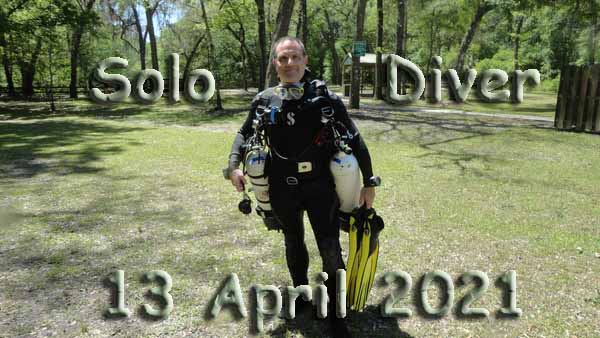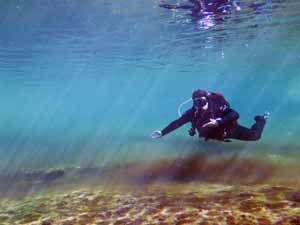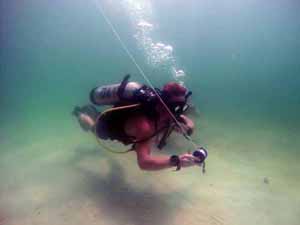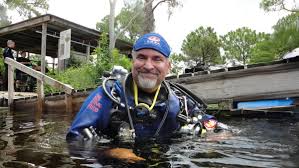|
Solo Diver Course
Solo Diver Course with Dayo Scuba, Central and North Florida

Click the above image for pictures from our last class!
The objective of this course is to train divers in the benefits, hazards, and
proper procedures for diving solo. Upon successful completion of this
course, graduates may engage in solo diving activities where appropriate.
Prerequisites

1. Minimum age 21
2. Advanced Diver (most any agency) or equivalent
3. Nitrox Diver (most any agency)
4. Provide proof of 100 logged dives
Required to own
.- a. Redundant air sources: pony cylinder, twin cylinders with isolation, independent doubles, or SpareAir™
- b. Regulators (for all cylinders)
- c. Buoyancy compensator device (BCD)
- d. Exposure suit appropriate for the dive
- e. Dive knife or other cutting tool (more than one better)
- f. Surface marker buoy
- g. Safety reel or spool
- h. Compass
- i. Dive computer
- j. Surface audible signaling devices, ie: whistle
* We understand some divers travel for classes, so if you can prove you own the following, we can rent most items.
Download the Forms
Solo Diver Liability Release Form
General Liability Form
Medical Statement Form
* Note, we only need page 1 if NO to all questions, else you'll need a physician sign off - print the whole form
Study material - SDI Solo Diver online course covers:
- a. Dive site selection and pre-dive considerations
- b. Filing notification of planned dive activities
- c. Contingency planning
- d. Equipment configuration appropriate for solo diving
- e. Gas management
- f. Avoiding entanglements
7. Navigation
- a. Why navigation skills are important to the solo diver
- b. Use of a mechanical compass
- c. Electronic compass
- d. Underwater diver tracking systems
8. Management of Solo Diving Emergencies
- a. Free-flowing regulators
- b. BCD inflator malfunctions
- c. Mask problems
- d. Managing currents
- e. Entanglements
- f. Unintended decompression obligations
- g. Panic and stress management techniques
- h. Use of surface marker buoys and location devices
In Water Scuba Skills

200 metres / 600 feet surface swim in full scuba equipment, configured
for local diving conditions; must be non-stop and performed in an open
water environment
1. Demonstrate adequate pre-dive planning
2. Limits based on personal gas consumption
3. Exact dive and/or no-decompression profile
4. Properly execute the planned dive within all predetermined limits
5. Equipment configuration appropriate for solo diving
a. Streamlining equipment
b. How to use and carry a redundant air supply
6. Proper descent / ascent rates
7. Proper safety stop procedures
8. Monitoring of decompression status with computer
9. Navigation skills
10. Demonstrate proficiency of navigation with compass
11. Demonstrate emergency change over to a backup regulator or bailout
scuba at a depth not exceeding 30 metres / 100 feet
12. Deploy surface marker and use of surface audible signaling device
Divers need to show the following

Self-reliance
Self-rescue
Good trim and bouyancy
Give examples when Not to Solo Dive
Sign up today!
You can pay online via most any credit card or with a PayPal account
Contact us if ANY questions!
|